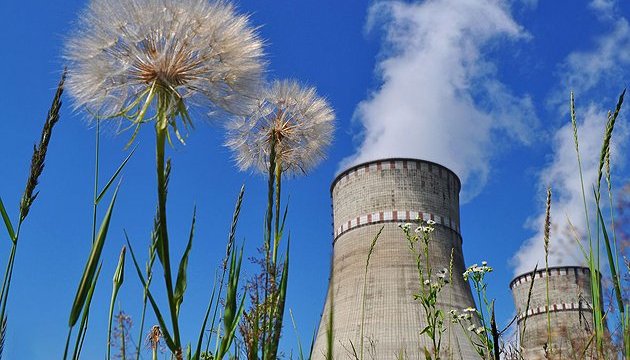УДК 53.047+628.16 • Issue 6 (34) / 2021 • 99-104 pages
D. Charny, D. Yaroshchuk, O. Puhach, G. Smirnova, O. Musich, M. Stokolos, V. Nikolenko, I. Tishchenko, N. Chernova
D. Charny, Dr. Sci., senior researcher, State Institution “Institute of Environmental Geochemistry, National Academy of Sciences of Ukraine”, ORCID: 0000-0001-6150-6433, dmitriych10@gmail.com
D. Yaroshchuk, engineer, State Institution “Institute of Environmental Geochemistry, National Academy of Sciences of Ukraine””, ORCID: 0000-0003-0190-8611, mitya.yaroshchuk@gmail.com
O. Puhach, junior researcher., State Institution “Institute of Environmental Geochemistry, National Academy of Sciences of Ukraine”, ORCID: 0000-0002-1378-3820, pav281082@gmail.com
G. Smirnova, senior researcher, candidate of biological sciences, “Institute of Microbiology and Virology. DK Zabolotny NAS of Ukraine” ORCID: 0000-0001-9402-9821, gf-smirnova@ukr.net
O. Musich, senior researcher, Candidate of Biological Sciences, State Institution “Institute of Environmental Geochemistry, National Academy of Sciences of Ukraine”, ORCID:0000-0003-3874-741X, nad79eva@ukr.net
M. Stokolos, junior researcher., State Institution “Institute of Environmental Geochemistry, National Academy of Sciences of Ukraine”, ORCID: 0000-0002-0471-1526, IGNS_Stokolos@nas.gov.ua
V. Nikolenko, leading engineer, State Institution “Institute of Environmental Geochemistry, National Academy of Sciences of Ukraine” ORCID: 0000-0002-9714-147X, borey@i.ua
I. Tishchenko, main technologist, State Institution “Institute of Environmental Geochemistry, National Academy of Sciences of Ukraine” ORCID: 0000-0002-1943-5333, biriuk@i.ua
N. Chernova, PhD, associate professor, National university of food technologies, ORCID: 0000-0002-5197-3430, notochka@ukr.net
Abstract
For today, taking into account the low efficiency of the disinfection technologies using chlorine-containing compounds and the growing number of chlorine-resistant microorganisms, the question of introducing alternative methods of disinfection in the field of water supply and drainage is relevant. One such alternative method is the treatment of liquids with plasma of electric discharge. This article describes our experiments on the treatment of different types of water from surface sources in Kyiv and water intentionally infected with Escherichia coli (E. coli). The experiments were performed on a laboratory installation with a circulating pump and an ejector-type reactor with integrated electrodes. In the reactor a water-air mixture is formed, in which an electric discharge takes place. The disinfection reactor and at the same time the device for the formation of a heterogeneous water-air environment is an ejector with electrodes inserted into it, which receive pulses of electric current. Discharges initiate a range of different physicochemical phenomena, such as a strong electric field, intense ultraviolet radiation, shock waves of excess pressure and, in particular, the formation of various highly active chemicals such as radicals (OH •, H •, O •) and molecules ( H2O2, H2, O2, O3). All these physicochemical processes occur during the discharge itself, for example, the formation and action of short-lived radicals, as well as the action of relatively long-lived oxidants. The effect of the concentration of microorganisms on the rate and completeness of water disinfection was studied in technical (tap) water with the introduction into the reaction tank of the washoff from two test tubes. This provided an initial concentration of E. coli of 3.4 ∙ 106 CFU / cm3. Water treatment for 30 seconds reduced the concentration of microorganisms by two orders of magnitude (up to 5.4 ∙ 104). After 1 minute of treatment, this figure decreased to 1.7 ∙ 102, and after 3 minutes to 5.2 CFU / cm3, i.e., the treated water corresponded to norms for almost pure water. Experiments have proven the effectiveness of plasma disinfection, even for liquids with a concentration of microorganisms significantly exceeding the maximum allowable concentrations. The content of microorganisms before and after treatment was determined by the method of limiting dilution of samples with subsequent sowing on a nutrient medium in Petri dishes.
Key words: water, water supply, desinfection, bacteria, plasma, electrical discharge.
Article
Reference
- Belinskiy V. V., I. V. Bozhko, D. V. Charnyy (2010). Tekhníchna elektrodinamíka. No. 3. P. 21–27.
- Bozhko I. V., Charnyy D. V. (2013). Tekhníchna elektrodinamíka. No. 3. P. 81–86.
- Bereka V., I. Boshko, D. Charny, (2020) Journal of Environmental Engineering and Science. Vol. 15, No. 3. 1-8. P. 91–100.
- Bozhko Í. V., V. Í. Zozulev, V. V. Kobil’chak (2016) Tekhníchnayelektrodinamíka. No. 2. P. 63–68.
- Fridman. Plasma chemistry. Cambridge university press, ISBN 978-0-521-84735-3, 2008.
- B. R. Locke, M. Sato, P. Sunka, M.R. Hoffmann, J.S. Chang. Electrohydraulic discharge and nonthermal plasma for water treatment. Ind. Eng. Chem. Res., vol. 20, pp.1-15, 2006 .
- Ruma, P. Lukes, N. Aoki, E. Spetlikova, S. H. R. Hosseini, T. Sakugawa and H. Akiyama. (2013) J. Phys. D: Appl. Phys., vol. 46, pp. 1-10.
- DSanPíN 2.2.4-171-10. Gígíêníchní vymogi do vodi pitnoí̈, priznachenoí̈ dlya spozhivannya lyudinoyu. 2010.
- Kashnitseva M. L. (1999). M : VNIRO, 304 p.
- Krasovskiy G. N. SanPiN no4630–88. Sanitarnyye pravila i normy okhrany poverkhnostnykh vod ot zagryazneniya . N. Krasovskiy. 1988.
- Zakharenko M. O., V. M. Polyakovs’kiy, L. V. Shevchenko. Vínnitsya :Vidavnichiy tsentr VNAU, 2012. 244 p.
- DSTU 4808:2007. Dzherela tsentralízovanogo pitnogo vodopostachannya. Gígíêníchní ta ekologíchní vimogi shchodo yakostí vodi í pravila vibirannya . 2007.
- Antipchuk A. F. Vodna míkrobíologíya . A. F. Antipchuk, Y.U. Kírêêva. K.: Kondor, 2005. 256 p.
